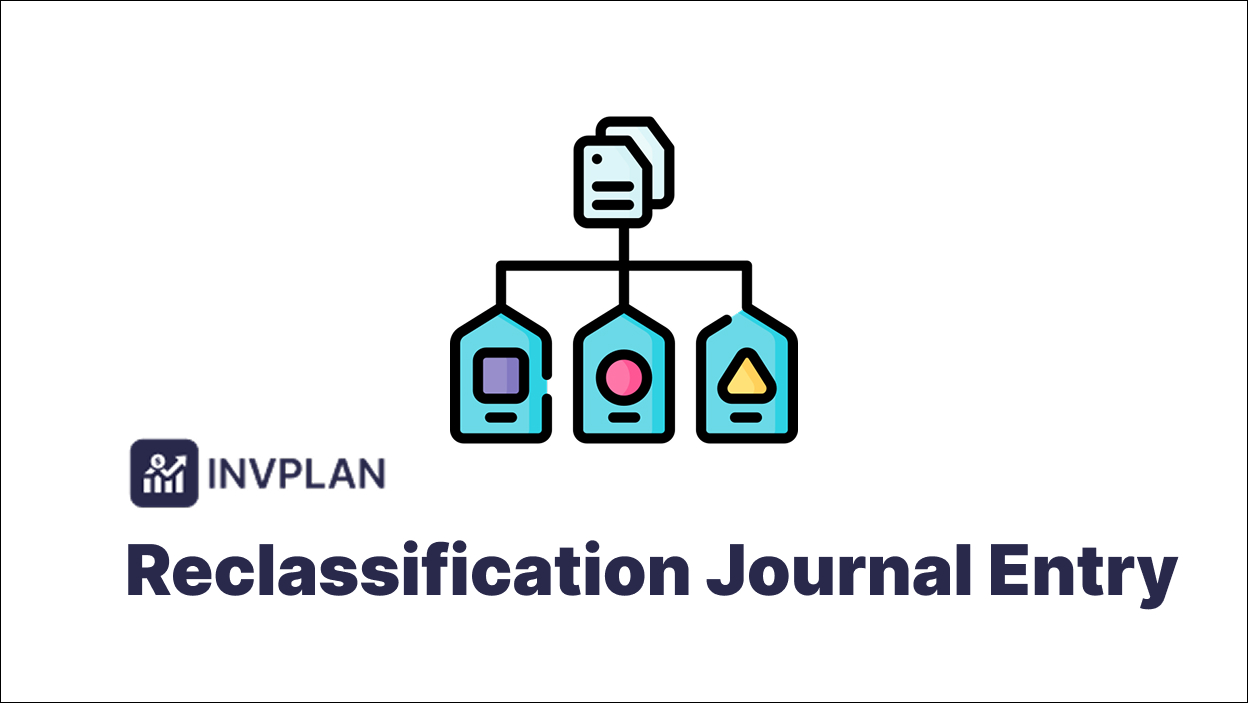You may face some situations such as you need to deliver a product or service and get paid after a month. How do you keep your financial records accurate? This is where accrual accounting helps. It records revenues and expenses when they happen, not just when money changes hands.
Companies use accrual journal entries to manage this. It adjusts financial records to match income and expenses with the periods they occur.
These concepts help you to make sure your financial statements truly reflect your business’s performance.
You will learn the following topics in this article:
- What accruals are and their Types.
- Definition, purpose, and key concepts of an accrual journal entry.
- How to record an accrual journal entry and include it in financial statements
- Differences between accrual and cash-based accounting.
- Examples.
Let’s begin with the main concept of Accruals and their types.
What are Accruals?
Accruals record revenues earned or expenses incurred before cash changes hands. The accrual basis of accounting recognizes transactions when they happen, not when a company receives or pays money.
Here are reasons to show you what they are important:
- It shows a more accurate picture of a business’s finances.
- Help match income and expenses to the right time.
- Follow accounting rules like GAAP and IFRS.
Here are the types of accruals.
- Accrued Revenue
- Accrued Expenses
- Deferred Revenue
- Prepaid Expenses
- Accrued Interest
- Accrued Salaries
- Accrued Taxes
In the following section, you will understand each one in-depth.
Accrued Revenue
Accrued revenue is income earned by deliver goods or services, even if payment hasn’t been received. The revenue is recognized when earned, not necessarily when cash is received under accrual accounting.
So, if a company provides a service in March but expects payment in April, the revenue is recorded in March. This way helps you align with the revenue recognition principle. That makes sure the income matches the period it’s earned.
Accrued Expenses
They are costs that a company has incurred but not yet paid. Expenses are recognized when they are incurred, regardless of when cash is paid within the accrual accounting.
This way aligns with the matching principle and ensures that expenses are recorded in the same period as the revenues they help generate.
Here are examples:
- Employee salaries such as wages earned by employees that are due for payment in the next period.
- Interest payable interests on loans that have accumulated but not been paid.
- Taxes payable: such as taxes owed to government authorities that are due after the accounting period ends.
Deferred Revenue
Deferred revenue has another name which is unearned revenue. It occurs when a company receives payment for products or services not delivered or performed.
This payment is recorded as a liability on the balance sheet which reflects the company’s obligation to fulfill the service or deliver the product in the future.
For example, a magazine publisher receives a one-year subscription fee upfront. This payment is recorded as deferred revenue. Each month, as an issue is delivered, a portion of the deferred revenue is recognized as earned revenue.
Prepaid Expenses
They are payments a company makes for goods or services it will receive in the future. Companies record these payments as assets on their balance sheets which recognize the expense gradually as they consume the benefit over time.
Here are some examples:
- Rent payments: if a company pays rent for office space in advance, it records the payment as a prepaid expense. The company recognizes a portion of the rent as an expense each month.
- Insurance premiums: a company pays an annual insurance premium upfront. The company recognizes the expense monthly as it receives coverage over the year.
Accrued Interest
It refers to the interest that accumulates on a loan or bond between regular payment dates.
This interest is calculated but not yet paid. In financial transactions, when a bond or loan changes hands between interest payment dates, the buyer compensates the seller for the interest that has accrued up to the sale date.
Here is an example:
Consider a bond with a $1000 face value a 6% annual coupon rate and semiannual interest payments. If the bond is sold 30 days after the last interest payment, the buyer owes the seller accrued interest for those 30 days. Here is the calculation for this:
- Annual interest payment: $1,000 × 6% = $60 per year
- Semiannual interest payment: $60 ÷ 2 = $30
- Daily interest accrual: $30 ÷ 180 days (assuming a 360-day year with 180 days between payments) ≈ $0.1667 per day
- Accrued interest for 30 days: $0.1667 × 30 = $5
Accrued Salaries
They are wages that employees have earned but have not yet been paid by the end of an accounting period.
Companies recognize these expenses when employees perform the work which ensures that expenses align with the revenues they help generate.
For example:
If a company pays its employees every Friday for the week ending that day, but the accounting period ends on a Wednesday. The company owes employees for the work performed on Monday through Wednesday.
Even though the company will pay these wages on Friday, it must record the salaries as an expense and a liability (accrued salaries) in the current period to match the expense with the related revenue.
Accrued Taxes
They are taxes a company owes but hasn’t paid by the end of an accounting period. Companies record expenses when they incur them, not just when they pay cash. This method matches expenses to the revenues they help generate.
Here are some examples:
- A company calculates its quarterly income tax liability but hasn’t remitted payment by the quarter’s end. It records the owed amount as an accrued tax liability.
- It collects sales tax from customers when a business sells goods or services. If the business hasn’t yet paid these collected taxes to the government, it lists them as accrued taxes.
Let’s move on to the following section to take a look at how to record accruals in statements.
What is an Accrual Journal Entry?
An accrual journal entry is a way to record income or costs before money is received or paid. It helps show a company’s true financial activities, not just when cash moves.
This follows the rule of matching income with the costs that helped create it. Here is its importance:
- It records income and expenses when earned or incurred and keeps reports accurate.
- Shows what a company owes and expects to receive.
- It is required under GAAP and IFRS.
- Gives a real view of finances for better planning.
- It voids missing unpaid expenses or uncollected revenue.
But how to record accruals in financial statements? Let’s move on to the following section to see how it works.
Recording Accruals in Financial Statements
Accrued revenues and expenses are included in the income statement to reflect all earnings and obligations within the reporting period.
That helps us to ensure that income and expenses are matched to the period they pertain to.
However, accrued revenues are recorded as assets (e.g., accounts receivable) in the Balance Sheet, while accrued expenses are recorded as liabilities (e.g., accounts payable).
It represents the company’s rights to receive cash and obligations to pay cash in the future.
Let’s move on to the following section to see how to do that in examples.
Examples
Here’s how to record different types of accruals in journal entries in accounting format:
Accrued Revenue (Revenue earned but not yet received)
For example:
A company completes a service worth $5,000 in December but gets paid in January.
Journal Entry (December 31 – Accrual):
Date Details Debit ($) Credit ($)
------------------------------------------------------------
Dec 31 Accounts Receivable 5,000
Revenue 5,000
Journal Entry (January – when cash is received):
Date Details Debit ($) Credit ($)
------------------------------------------------------------
Jan XX Cash 5,000
Accounts Receivable 5,000
Accrued Expenses (Expenses incurred but not paid)
A company owes employees $3,000 in salaries for December but pays in January.
Journal Entry (December 31 – Accrual):
Date Details Debit ($) Credit ($)
------------------------------------------------------------
Dec 31 Salaries Expense 3,000
Salaries Payable 3,000
Journal Entry (January – When salary is paid):
Date Details Debit ($) Credit ($)
------------------------------------------------------------
Jan XX Salaries Payable 3,000
Cash 3,000
Anyway, in the following section, you will understand the difference between accrual and cash basis journal entries.
Differences Between Accrual and Cash Basis Journal Entries
Accrual and cash basis accounting differ in when they record financial transactions.
Cash Basis Accounting:
- Revenue is recorded when cash is received.
- Expenses are recorded when cash is paid.
Accrual Basis Accounting:
- Revenue is recorded when earned, any case of when cash is received.
- Expenses are recorded when incurred, regardless way of when cash is paid.
| Transaction | Cash Basis Accounting | Accrual Basis Accounting |
|---|---|---|
| Service Performed on March 15; Payment Received on April 5 | No entry on March 15; on April 5: Debit Cash, Credit Revenue. | On March 15: Debit Accounts Receivable, Credit Revenue; no entry on April 5. |
| Expense Incurred on March 20; Payment Made on April 10 | No entry on March 20; on April 10: Debit Expense, Credit Cash. | On March 20: Debit Expense, Credit Accounts Payable; no entry on April 10. |
This distinction affects how financial transactions are reported and can influence the financial statements of a business.
But how do you reverse accrual entries? Let’s answer this question in the following part.
Reversing Accrual Journal Entries
If a company records income in one month but gets paid in the next month. They can use the reversing entry at the start of the new month to undo the earlier record. When the payment finally comes in, the company doesn’t count the same income twice.
Here is an example:
- A company earns $1,000 in December but won’t receive payment until January.
- The company uses reversing entries to handle this.
Here is how to handle accrual entries with reversing:
Record the Accrual Entry (December 31):
The company records the revenue it has earned but not yet received at the end of December.
| Account | Debit | Credit |
|---|---|---|
| Accounts Receivable | $1,000 | |
| Revenue | $1,000 |
Reverse the Accrual Entry (January 1):
On January 1, the company reverses the accrual entry to avoid double-counting the revenue when payment is received.
| Account | Debit | Credit |
|---|---|---|
| Revenue | $1,000 | |
| Accounts Receivable | $1,000 |
Record the Actual Payment (January 10):
The company records the cash receipt when the payment is received in January.
| Account | Debit | Credit |
|---|---|---|
| Cash | $1,000 | |
| Accounts Receivable | $1,000 |
This process helps us to make sure the revenue is only counted once, and the ledger stays accurate!
Wrapping Up
Accrual accounting helps you keep your financial records accurate. It records income and expenses when they happen, not just when money changes hands. It makes sure your financial statements reflect your business’s true performance.
You can track revenues and expenses in the right period with accrual journal entries. This way helps you follow accounting standards and gives a clearer view of your finances.



